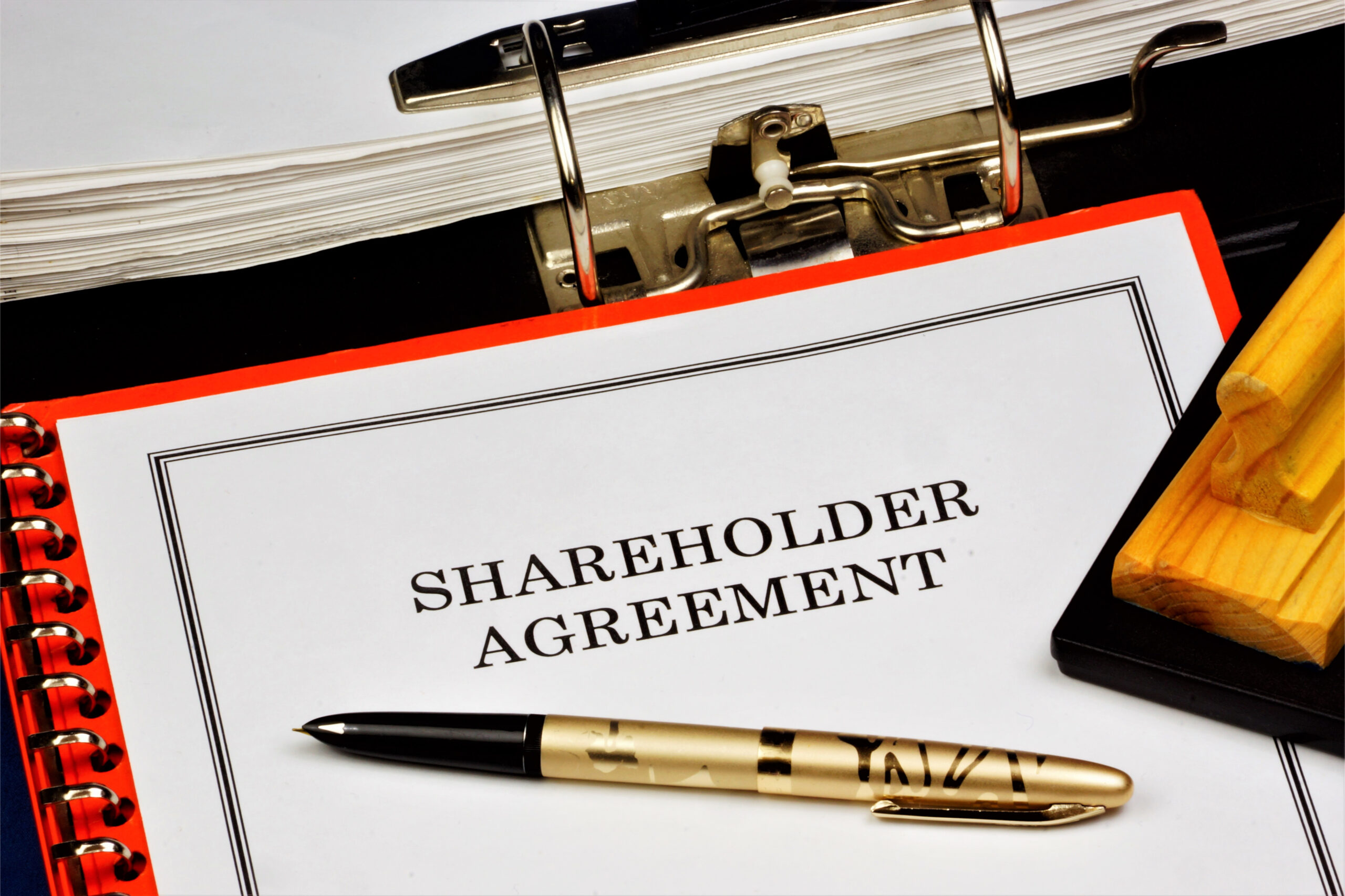Sometimes it becomes necessary to remove a shareholder from a company so that the organization can operate smoothly. Can we remove a shareholder from the company? If yes, How? This article answers your questions.
Overview:
A company can add or remove shareholders at any time. It must be notified to the Registrar Of Companies (ROCs) and filled in the share register maintained by the company. However, the same can be updated on the company’s website at any time. Removing a shareholder might not be that simple. Here is a simple guide to help you through.
Shareholder’s Agreement:
- Every organization usually writes down a ‘shareholders agreement’ which lays down the rules to abide by and the duties to be performed by a shareholder. This is agreed to by each shareholder to ensure a fair representation.
- The same agreement may also mention the removal process of a shareholder from the company. A company refers to this agreement in case it wants to cut ties with a shareholder.
- If the rules of conduct by shareholders are mentioned specifically and clearly in the shareholder’s agreement, it becomes easy for the company to do away with even a majority shareholder.
- Even if a shareholder has a holding of more than 50% in the company, he/she can still be removed solely based on the offense committed by them as explicitly mentioned in the agreement.
- You should be cautious in preparing a shareholder agreement as some issues might arise if legalities are not considered. You might want to seek a professional’s help. Let Vakilsearch do this for you.
Seek legal help:
In case the company does not have any clause for shareholder’s removal in the agreement, it is better to turn towards a professional for legal help.
Professionals can help you approach the process in a legal way in a negotiable and objective manner. They will ensure you abide by the laws of the state and meet any regional requirements.
Every state has its own corporate statute on the removal of shareholders, and other laws for the company. Let your attorney go through your state’s corporate statute and guide you in legally cutting off a shareholder from the company.
Vakilsearch’s company name generator has many company name suggestions for you to use on your new unregistered company.
Steps to Remove a Shareholder
- If the shareholder is to be removed involuntarily, he must have violated the company by-laws or the shareholder’s agreement.
- A resolution for the removal has to be then drafted and presented to the Board of Directors (BODs). It must also be presented to a specific set of shareholders if the agreement mentions so.
- The resolution has to mention the grounds of removal of the shareholder, or the violation of the corporate statute clearly. It can also include a buy-out request.
- The resolution would then require a signature from the corporate secretary and the board of directors.
- A meeting of the company’s governing board has to be then held to vote on the resolution. If passed, the resolution has to be again signed by the corporate secretary.
- If the shareholder has not violated any company rules, the company may still remove him/her. For this, the shareholder removal resolution must be passed by a 75% majority vote. In such a case, the shareholder in question cannot own more than 25% shares of the company.
What After Successful Removal of a Shareholder?
If you successfully remove the shareholder, you might want to create a ‘non-compete agreement’. Such an agreement ensures that the departing shareholder does not start or enter a business that directly competes with your organisation, for a set number of days.
What if You Fail to Cut off a Shareholder?
If nothing works in the favour of the removal, you must negotiate a fair price of the shares with the shareholder. If you reach an agreement, you can buy back the shares and distribute them to the individuals in the company.
Refer to the Shareholders’ Agreement
A shareholders’ agreement delineates the rights and responsibilities of each shareholder within an organisation. Typically, all shareholders collaboratively create and consent to it, ensuring equitable representation for everyone. This document serves as a reference if the need arises to part ways with a shareholder in the future.
Nate Masterson, chief marketing officer for Maple Holistics, explained, ‘The shareholders’ agreement is essentially a contract among all shareholders, outlining prohibited actions. When the conduct rules are specific, removing a shareholder due to misconduct becomes more straightforward.’
This agreement proves especially beneficial when dealing with a majority shareholder, someone holding more than 50% of the company’s outstanding shares. Violations explicitly outlined in the agreement can serve as grounds for their removal. Masterson suggests including a provision in the agreement for annual director elections as a preventive measure against such issues.
Precision is crucial when drafting the agreement. It’s essential to scrutinise elements that could affect the process and timing of shareholder removal, along with associated consequences. Consider specifics like dates, issued share quantities, matters related to shareholder equity, and the rights of shareholders in the event of a company sale, among other clauses influencing the shareholder removal procedure.
Consult Professionals
Before taking action, especially in the absence of a shareholders’ agreement, seeking professional advice is crucial to avoid potential legal complications. Although the process might seem straightforward, it demands careful consideration and attention.
According to Stanley P. Jaskiewicz, an attorney at Spector Gadon Rosen Vinci P.C., ‘Removing a shareholder is not a task for amateurs.’ Consulting legal counsel, under attorney-client privilege, early on is highly recommended. An agreed-upon voluntary buyout between the company and the shareholder in question will likely cost significantly less than the expenses incurred in a contested removal.
Professionals can assist in approaching the situation objectively and through negotiation, ensuring compliance with regional requirements. This is especially vital in sensitive business decisions that may strain relationships among partners. Skipping this step for the sake of expediency or cost-saving is not advisable.
Jaskiewicz also notes, ‘In certain cases, hiring an independent attorney may be necessary if the company’s counsel has ethical or legal obligations to the targeted individual.’
Create a Non-compete Agreement
If you successfully remove a shareholder, be careful moving forward. The process can be turbulent, so it’s wise to enforce a noncompete agreement upon their departure. This measure will prevent them from initiating or joining a business that directly rivals your organisation for a specified period after they leave.
FAQs
What is the procedure for removing shareholders?
Removing shareholders involves following the guidelines set in the company's bylaws or shareholder agreement. Typically, it requires board approval, a buyout agreement, or legal action if terms of departure aren't agreed upon.
How do you remove ownership from a company?
Removing ownership usually necessitates a buyout or agreement between the shareholder and the company. It might involve selling back shares, executing a buy-sell agreement, or legal action if terms aren't mutually settled.
How do you exit a shareholder in a company?
Exiting a shareholder often involves following stipulations in the shareholders' agreement or company bylaws. It usually requires mutual consent, a buyout agreement, or legal recourse if terms are disputed.
Can a shareholder withdraw from a company?
Shareholders can typically withdraw by selling their shares, following terms in the shareholder agreement or company bylaws. This might involve a buyout, transfer of shares, or legal procedures if terms aren't agreed upon.
How do I remove a 40% shareholder?
Removing a 40% shareholder usually involves adherence to agreements in the company's bylaws or shareholder pact. It might require negotiation, buyout terms, or legal recourse if terms for departure are contested.
Can you remove a 50% shareholder?
Removing a 50% shareholder can be complex but might involve adhering to bylaws, negotiation, executing a buy-sell agreement, or pursuing legal avenues if terms for departure are not agreed upon. Compliance with legal and agreement terms is crucial.










